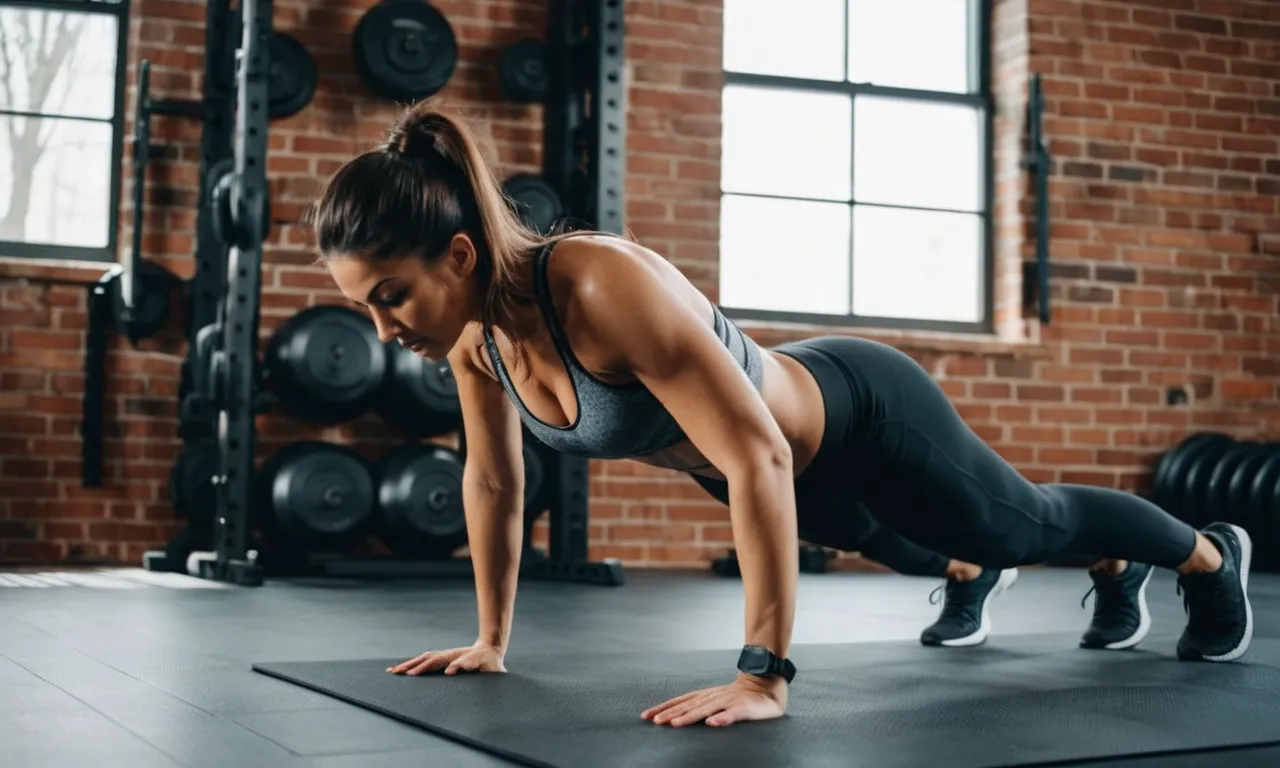The 3X5 Workout: A Comprehensive Guide To Maximizing Strength And Muscle Gains
In the ever-evolving world of fitness, the 3×5 workout has emerged as a powerful and efficient training protocol that promises remarkable results in strength and muscle development.
If you’re short on time, here’s a quick answer to your question: The 3×5 workout is a strength training program that involves performing three sets of five repetitions for compound exercises like squats, deadlifts, and bench presses.
It’s designed to help you progressively overload your muscles, leading to increased strength and muscle growth.
In this comprehensive article, we’ll delve into the intricacies of the 3×5 workout, exploring its origins, benefits, and practical implementation. Whether you’re a seasoned lifter or a fitness enthusiast seeking a proven approach, this guide will equip you with the knowledge and strategies to maximize your gains.
The Origins of the 3×5 Workout
The Principles of Progressive Overload
The 3×5 workout is rooted in the fundamental principle of progressive overload, which states that to continually increase muscle size and strength, the body must be exposed to greater-than-normal demands over time.
This principle was first popularized by renowned strength coach Thomas Delorme in the 1940s and has since become a cornerstone of effective strength training programs. The 3×5 workout adheres to this principle by gradually increasing the weight lifted over successive workouts, challenging the muscles to adapt and grow stronger.
The Influence of Strength Training Pioneers
The 3×5 workout can trace its origins to the training philosophies of several influential strength coaches and bodybuilders from the mid-20th century. Bill Starr, a legendary strength coach and Olympic weightlifter, was a proponent of low-rep, high-intensity training, which formed the basis of the 3×5 approach.
Similarly, Reg Park, a three-time Mr. Universe winner, advocated for a 5×5 training protocol that closely resembles the 3×5 workout. These pioneers recognized the effectiveness of low-rep, heavy-weight training for building significant strength and muscle mass.
The Evolution of the 3×5 Workout
While the principles behind the 3×5 workout have been around for decades, the specific program structure gained widespread popularity in the late 2000s through the work of strength coaches like Mark Rippetoe and Jim Wendler.
Rippetoe’s Starting Strength program, which incorporates a 3×5 scheme for compound lifts like squats, deadlifts, and presses, has become a go-to resource for beginners looking to build a solid strength foundation.
Wendler’s 5/3/1 program, while more advanced, also incorporates 3×5 sets for certain lifts, highlighting the versatility and effectiveness of this approach.
Today, the 3×5 workout has become a staple in many gyms and training facilities around the world. Its simplicity, effectiveness, and ability to consistently deliver results have made it a favorite among lifters of all experience levels.
With a focus on compound exercises, heavy weights, and progressive overload, the 3×5 workout continues to stand the test of time as a powerful tool for building strength and muscle. 😊💪
The Science Behind the 3×5 Workout
Muscle Fiber Recruitment and Hypertrophy
The 3×5 workout is a strength training regimen designed to maximize muscle fiber recruitment and hypertrophy (growth). When you lift heavy weights with low repetitions, your body is forced to recruit the strongest and most powerful muscle fibers, known as fast-twitch fibers.
These fibers have the greatest potential for growth and strength gains. According to a study published in the Journal of Strength and Conditioning Research, training to failure (the point where you can’t complete another repetition) leads to greater muscle fiber activation and hypertrophy compared to non-failure training.
The 3×5 workout capitalizes on this principle by pushing you to your limits with heavy weights and low reps.
The Role of Volume and Intensity
While the 3×5 workout may seem like a low-volume program, it’s actually a strategic balance of volume and intensity. The low rep range (5 reps per set) allows you to lift heavier weights, which increases the intensity and stimulates strength and muscle growth.
At the same time, the multiple sets (3 sets per exercise) provide enough volume to trigger a robust hypertrophic response. A study published in the Journal of Strength and Conditioning Research found that both high-load (80-85% of 1RM) and low-load (60-65% of 1RM) training resulted in similar muscle growth when volume was equated.
The 3×5 workout hits the sweet spot by combining heavy weights with a moderate volume, optimizing both strength and hypertrophy.
Optimizing Recovery and Adaptation
One of the key advantages of the 3×5 workout is its ability to optimize recovery and adaptation. The relatively low volume and strategic rest periods allow your body to recover more effectively between workouts, preventing overtraining and ensuring that you’re fresh for each session.
This is crucial for making consistent progress and avoiding plateaus. Additionally, the heavy loads and low reps stimulate your body to adapt by increasing muscle fiber size, strength, and power. A study published in the PLOS ONE journal found that heavy resistance training (80-90% of 1RM) resulted in greater increases in muscle cross-sectional area and strength compared to lighter training.
By adhering to the principles of the 3×5 workout, you can optimize your body’s ability to recover, adapt, and make continuous gains in strength and muscle mass.
With its strategic combination of heavy weights, low reps, and moderate volume, the 3×5 workout is a scientifically-backed approach to maximizing muscle fiber recruitment, hypertrophy, and strength gains, while also optimizing recovery and adaptation. By understanding the science behind this program, you can make informed decisions and tailor it to your specific goals and needs, whether you’re a seasoned lifter or just starting your fitness journey.
Designing Your 3×5 Workout Routine
Selecting the Right Exercises
The foundation of a successful 3×5 workout routine lies in carefully selecting the right exercises. The core lifts should be compound movements that target multiple muscle groups simultaneously, such as the squat, bench press, and deadlift.
These exercises not only build strength and muscle, but also promote functional fitness and overall athleticism. According to a study published in the Journal of Strength and Conditioning Research, combining these multi-joint exercises with a high-intensity, low-volume approach like the 3×5 method can lead to significant gains in strength and hypertrophy.
In addition to the main lifts, it’s essential to choose supplementary exercises that address any muscle imbalances or weaknesses. These can include isolation movements like bicep curls, tricep extensions, and lateral raises.
However, it’s crucial to prioritize compound exercises and focus on progressive overload to maximize results.
Structuring Your Workout Split
When designing your 3×5 workout split, consider your goals, schedule, and recovery needs. A popular approach is the full-body routine, where you train all major muscle groups in each session, three times per week. This method is time-efficient and allows for ample rest between workouts.
Alternatively, you can opt for an upper/lower split, training the upper body one day and the lower body the next, repeating the cycle three times per week. This approach can be beneficial for those who prefer more frequent training or have specific muscle groups they want to prioritize.
Whichever split you choose, it’s essential to allow for adequate rest and recovery. A study by the National Strength and Conditioning Association suggests that 48-72 hours of rest between training the same muscle groups is optimal for muscle growth and strength gains.
Don’t be afraid to adjust your routine as needed to accommodate your individual needs and preferences.
Incorporating Accessory Movements
While the core lifts should be the primary focus of your 3×5 routine, incorporating accessory movements can help address specific muscle groups or weaknesses. These exercises can be added at the end of your main workout or performed on separate days, depending on your preference and recovery needs.
Some examples of effective accessory movements include:
- Dumbbell rows for back development
- Calf raises for lower leg strength
- Dips for triceps and chest
- Glute bridges for posterior chain activation
Remember, accessory movements should complement your main lifts, not detract from them. Keep the volume and intensity moderate to avoid overtraining or compromising recovery for your primary exercises.
By carefully selecting the right exercises, structuring an effective workout split, and incorporating targeted accessory movements, you can design a 3×5 workout routine that maximizes your strength and muscle gains while promoting overall athleticism and functional fitness.
Don’t be afraid to experiment and adjust your routine as needed to find what works best for your individual goals and preferences. 😊💪
Executing the 3×5 Workout Effectively
Proper Form and Technique
Mastering proper form and technique is the foundation of the 3×5 workout. It not only ensures that you target the intended muscle groups effectively but also reduces the risk of injury. When performing exercises like squats, deadlifts, and bench presses, it’s crucial to maintain a neutral spine, engage your core muscles, and avoid excessive arching or rounding of the back.
Consider filming yourself or seeking guidance from a qualified trainer or coach to ensure you’re executing the movements correctly. Resources like Muscle & Strength provide detailed instructions and video demonstrations for various exercises.
Progressive Overload Strategies
The key to continuous muscle growth and strength gains lies in progressive overload. This means gradually increasing the demands placed on your muscles over time. Here are some strategies to implement progressive overload in your 3×5 workout:
- Increase Weight: Once you can comfortably complete all sets and reps with a given weight, it’s time to add more resistance. Aim for small increments, such as 2.5-5% increases, to avoid plateaus or excessive strain.
- Increase Volume: Another approach is to gradually increase the number of sets or reps you perform. For example, you could transition to a 4×5 or 5×5 program after a few successful cycles.
- Vary Rest Periods: Shortening your rest periods between sets can make the workout more challenging and promote greater muscular endurance.
According to a study published in the Journal of Strength and Conditioning Research, combining different progressive overload strategies can lead to superior strength and muscle gains compared to using a single method.
Tracking and Adjusting Your Progress
Keeping a detailed workout log is essential for tracking your progress and making informed adjustments to your 3×5 routine. Record the weights used, the number of sets and reps completed, and any notes on your performance or how you felt during the session.
This data will help you identify areas for improvement and celebrate your achievements along the way. 🎉
If you hit a plateau or feel like your progress has stalled, don’t hesitate to reassess your approach. Consider factors like sleep quality, nutrition, and overall recovery. You might need to adjust your caloric intake, incorporate more rest days, or modify your exercise selection to target different muscle groups.
Remember, the 3×5 workout is a flexible framework, and small tweaks can often reignite progress and keep your gains coming. Stay patient, stay consistent, and trust the process – the results will follow! 💪
Supplementing Your 3×5 Workout
Nutrition for Muscle Growth and Recovery
Proper nutrition is the foundation for maximizing the benefits of the 3×5 workout. To support muscle growth and recovery, it’s essential to consume adequate amounts of protein, carbohydrates, and healthy fats.
According to EatRight.org, athletes should aim for 0.5-0.8 grams of protein per pound of body weight per day. Carbohydrates provide the energy needed for intense training sessions, while healthy fats support hormone production and nutrient absorption.
😊 A balanced diet rich in whole foods like lean meats, vegetables, fruits, and whole grains can help you achieve your fitness goals.
The Role of Supplementation
While a well-rounded diet is crucial, supplements can provide an additional boost to support your 3×5 workout routine. Whey protein supplements are a convenient way to ensure you’re getting enough protein, especially on days when it’s challenging to consume enough from whole foods.
Creatine, a popular supplement among strength athletes, has been shown to increase lean muscle mass and improve strength performance (source). Other beneficial supplements may include beta-alanine, BCAAs, and omega-3 fatty acids.
However, it’s important to consult with a healthcare professional or a qualified sports nutritionist before incorporating any new supplements into your regimen.
Integrating Cardio and Active Recovery
While the 3×5 workout is primarily focused on strength training, incorporating cardio and active recovery can help improve overall fitness and support muscle recovery. Low-intensity steady-state cardio (LISS), such as walking or cycling, can help improve cardiovascular health and promote blood flow, which aids in muscle recovery.
High-intensity interval training (HIIT) can be a time-efficient way to boost your metabolism and burn additional calories. 👏 Active recovery activities like yoga, foam rolling, or light stretching can help reduce muscle soreness and improve flexibility, allowing you to perform at your best during your next 3×5 workout session.
Remember, consistency is key when it comes to achieving your fitness goals. By combining the 3×5 workout with proper nutrition, targeted supplementation, and active recovery, you’ll be well on your way to maximizing your strength and muscle gains. Don’t be afraid to experiment and find what works best for your body – amazing results await those who persevere!
🎉
Conclusion
The 3×5 workout has proven its effectiveness in building strength and muscle mass for countless fitness enthusiasts and athletes alike. By adhering to the principles of progressive overload, proper form, and strategic programming, you can unlock your full potential and achieve remarkable results.
Remember, consistency and dedication are key to success in any fitness journey. Embrace the challenge of the 3×5 workout, and witness the transformative power it can have on your physique and overall fitness level.
With the right mindset and commitment, you’ll be well on your way to achieving your strength and muscle-building goals.








